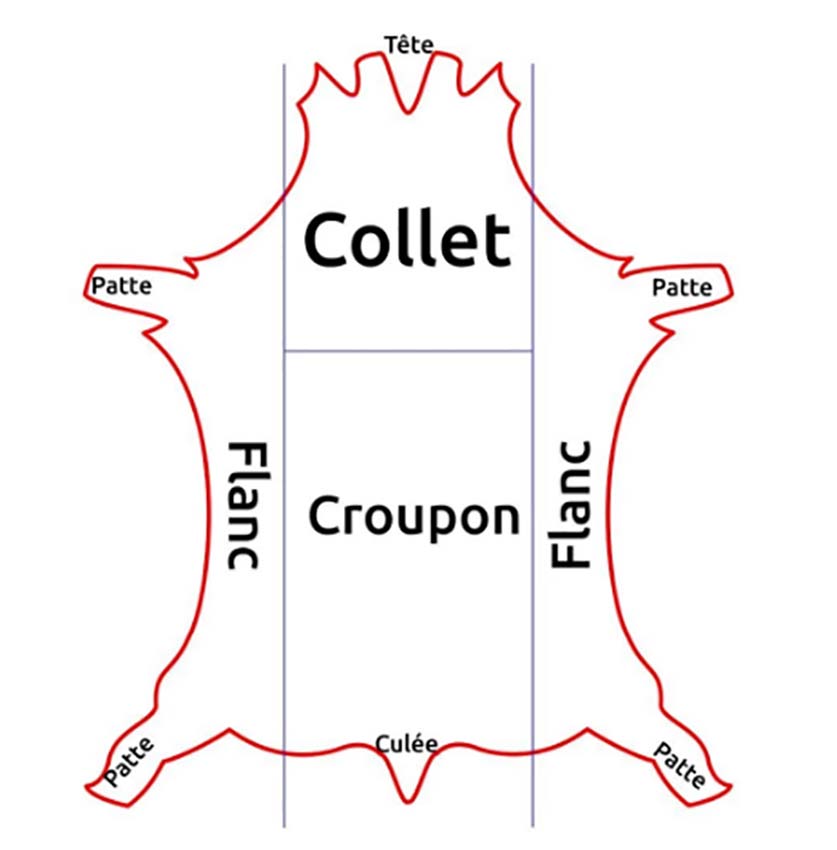80% of the French production of leathers comes from cattle.The skin, after being detached from the animal's body, is a flexible and humid material that can rot very quickly by the action of bacteria. It is said that she is putrescible.

Nineteenth century table.
|
Summary |
The main steps to obtain leather
In order to keep it as well as possible before it arrives at the tannery, it must be salted. Sorted and weighed then put into batteries, raw skins, formerly called green leathers, are grouped by lots according to their weights and qualities. The weight of fresh adult cattle skin varies between 40 and 55 kg.The animal's skin is made up of three layers: theepidermis, superficial layer, dermis, intermediate layer and subcutaneous tissues which are in contact with the flesh. The hairs, made up of keratin, are located in the dermis.
THE tanner only transforms the dermis part into leather, the other layers are eliminated. After tanning, irreversible chemical process, leather has a side called flower, the external side, and a flesh side, the internal side.The cattle skin is quickly cut into different parts.

The different parts of the leather.
THE flanks Represent the side bands for the tanners who include legs. THE Croupon corresponds to the rump and the back of the animal and the collar designates the part of the neck with the shoulders.
 any question ?
any question ? 

